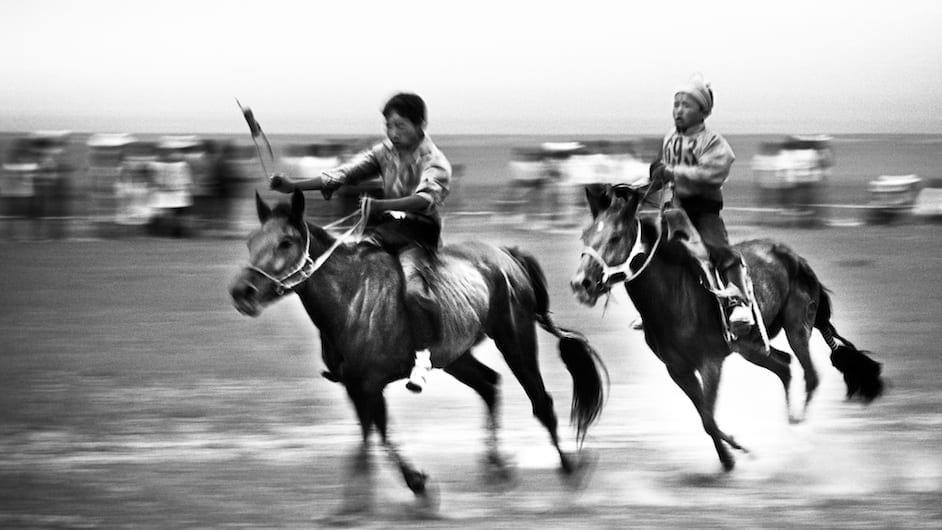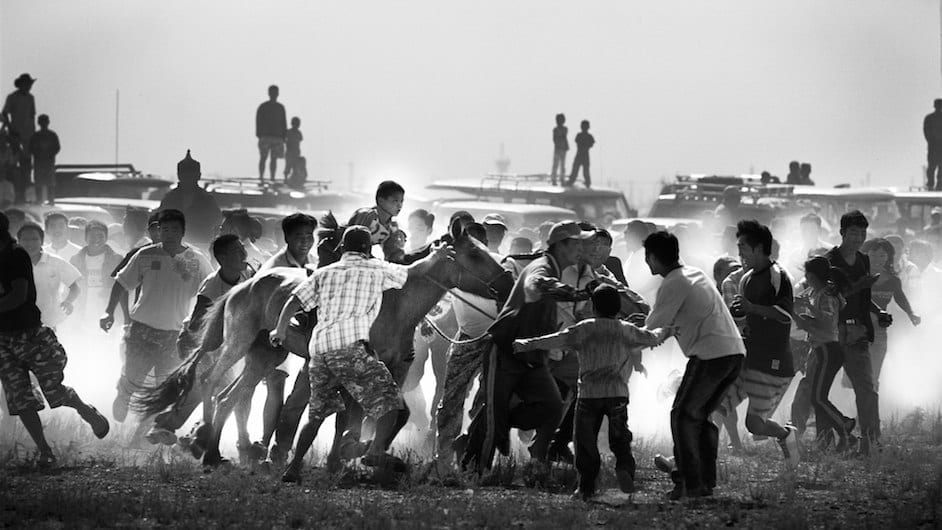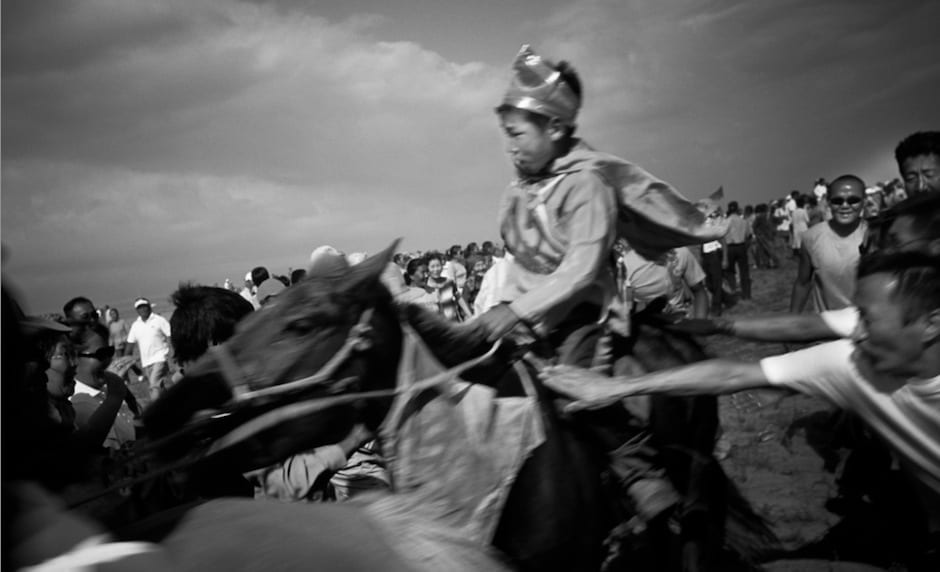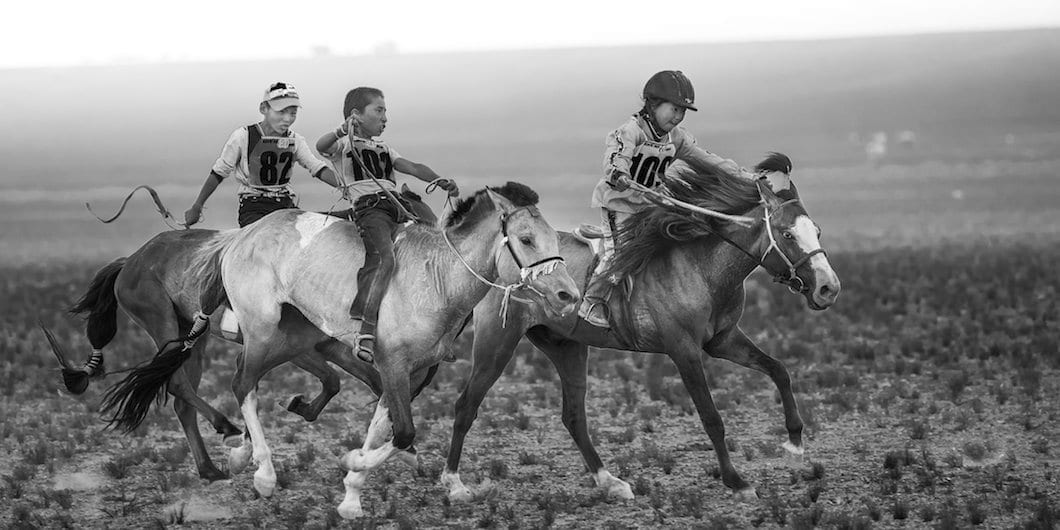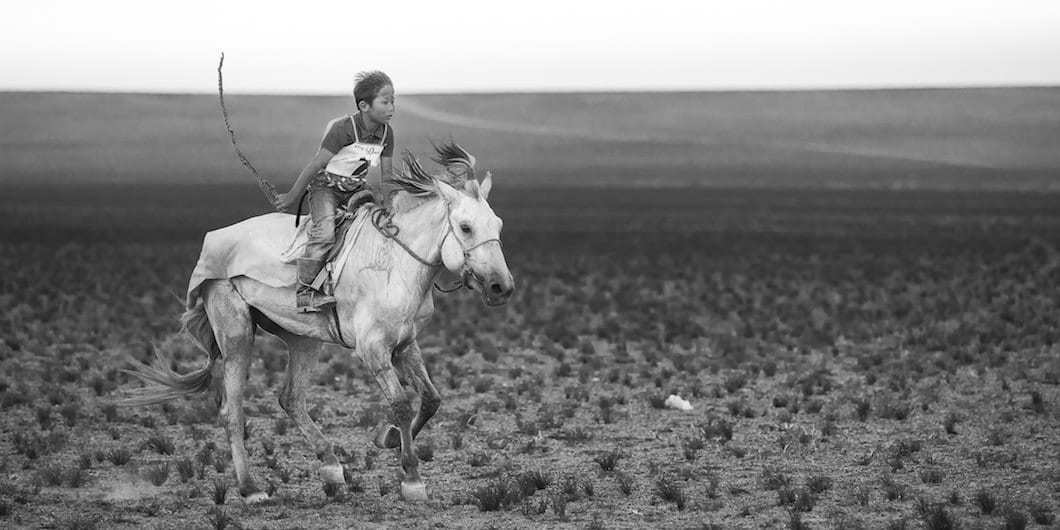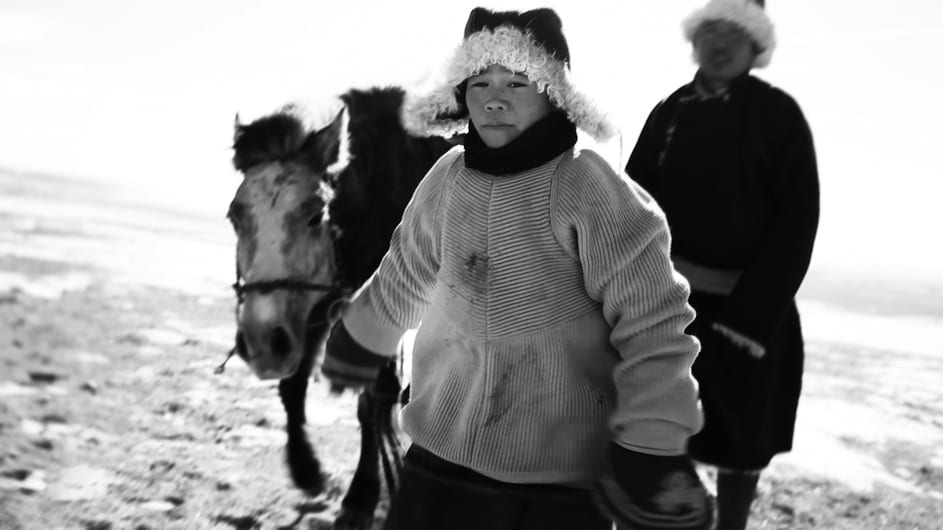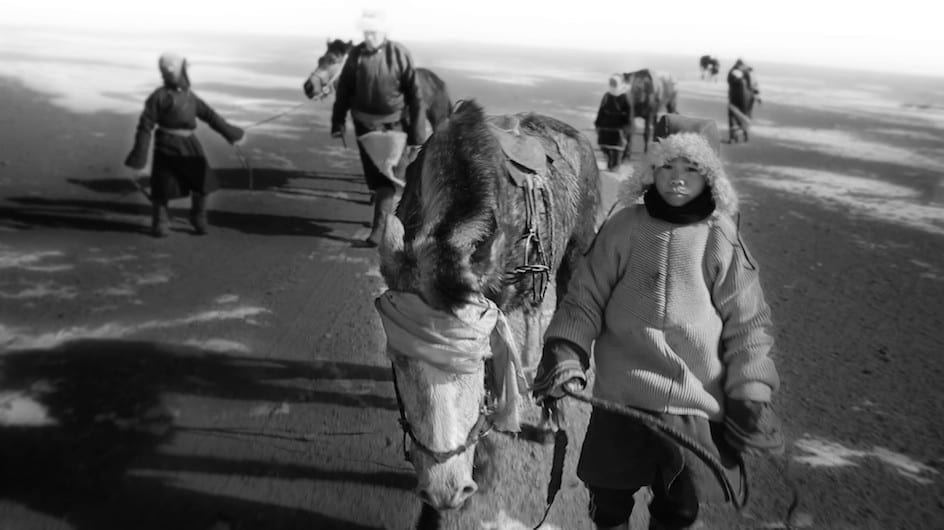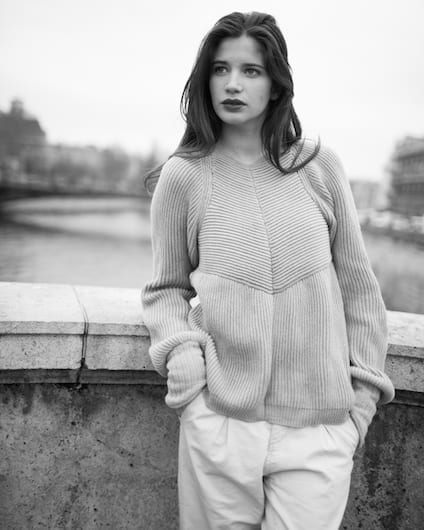Mongolians believe that the world consists of innumerous elements of dust, from physical to spiritual. But it is the dust and sweat of racing horses which is considered to have supernatural powers as it connects with the universe and turns into shimmering gold.
It is an ancient Mongolian myth that says it is possible to charge your spirit and fortune by getting in touch with the whirled up dust of the country’s horse races. The essence of luck, positive spiritual energy, is literally captured within THOS luxury cashmere sweaters.
Each piece of THOS’ limited edition has been made out of the finest Mongolian cashmere and has been worn by a child jockey during one of the few spectacular horse races. The pieces are marked by this process, they become dirty, they become worn, but most important they are charged with spirit.
THOS – which means dust – creator Tschagsalmaa Borchuu, describes her brand as more of an art project with only 50 sweaters produced a year. She says: “THOS is more then just a fashion concept, I believe in spiritual emotions and that fashion can translate these to the physical world to create a dialogue. It’s also my personal belief that it’s these intangibles, which are the next level in the evolution of luxury.”
Capturing this essence is Uisenma Borchu’s wonderful film of the horse races and here we catch up with the young Mongolian-German director about making the magic tangible.
How did the film, Philosophy of Dust, come about?
Tschagsalmaa, the founder and designer of Thos, told me about the idea and philosophy of her brand and we decided to accompany her to film these special races in Mongolia.
We were very happy that the experienced DOP Sven Zellner who had already made films in Mongolia agreed to take the pictures (see his photography series in Related Content). His last documentary was about Mongolian Ninjas, illegal goldminers, that Sven and I cut together. That was a huge advantage as we’d already established we wanted to work with documentary.
We have relations in Mongolia who are nomads and they directed us to the area where we found some young boys preparing for the race. During the race our 12 year old protagonist Dashgomb wore the cashmere sweater that became imbued with dust and sweat. We later went to Paris to shoot the model Ornella wearing the lucky sweater.
What was behind your decision to shoot in black and white?
THOS stands for a value that is universal, for something intangible like luck and energy. So it was the visual element for me to shoot in black and white, to represent the two different worlds: A very old myth in Mongolia and the contemporary Paris, urban and modern, but they have the same longings in life.
THOS is about a universal feeling. Every human being knows it. And to film the horse race and the girl in Paris in black and white connects them, they are far away from each other but spiritually connected.
I see the material also as historical. It is a documentation of our world today and with the sweater it means there is also a dialogue between the cultures.
How difficult was it to film the boys?
It was so inspiring and powerful to be with the children who wore the sweaters. The belief of the Mongolian people is so strong and in the film you can feel the genuine feelings of the children and of the other people trying to get in touch with the sweat.
In Mongolia it was wintertime and already minus 30 degrees in the capital Ulaan Baatar. It was extreme and also a beautiful experience. As we drove into the desert I was worried if our equipment was going to handle the cold. We shot on Canon 5 D Mark II, Sony EX 1 and a Go Pro.
It was very special to watch the boys and how they prepared for the races. I marveled how tough the boys were with the cold. Most of them didn’t wear any gloves for the race of about 14 kilometers at a speed of almost 70 km per hour.
Tell us about the location please.
We shot in the Gobi desert for seven days and we lived the whole time with the nomads to be very close with them. So we also spent time with them while they were doing their normal work.
What are you currently up to?
I’m a film student at the University of Television and Film in Munich. Until now I’ve made documentaries, and also commercials and experimental films. I just finished a documentary about the life of a nomad boy for the German television children’s channel, Kinder Kanal.
Now I’m writing my first feature film which I hope to shoot in the beginning of next year.
Filmmaking is a way to express myself. I want to put certain things in context to create new content. When I find a friction, new thoughts, it means success to me. That’s why filmmaking is so full of tension.
You have an interesting heritage, how does this impact on your work?
My mother studied in Berlin, in the former GDR German Democratic Republic. As I was born in Mongolia she was working in Germany and in Mongolia until my parents decided to move entirely to Germany when I was five years old. So my brother, sister and I began a new life with our parents in Germany in 1990.
Life was very confusing through the upheaval and the big change switching from the Mongolian culture to the German one.
But growing up between these two different ways of thinking is very important and special to me, it is my source of stories and feelings.
